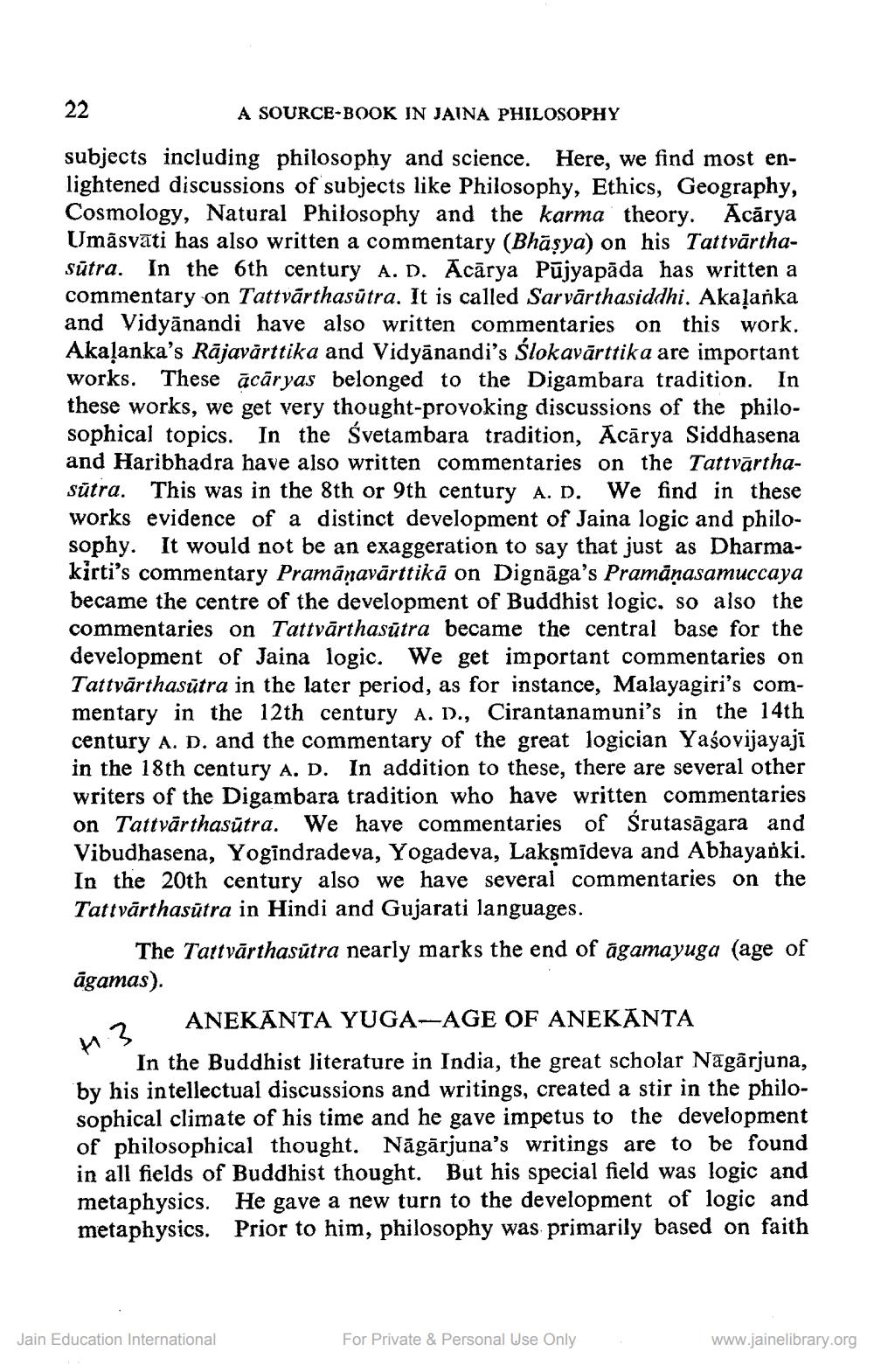________________
22
A SOURCE-BOOK IN JAINA PHILOSOPHY
subjects including philosophy and science. Here, we find most enlightened discussions of subjects like Philosophy, Ethics, Geography, Cosmology, Natural Philosophy and the karma theory. Acārya Umāsvāti has also written a commentary (Bhäsya) on his TattvārthaSūtra. In the 6th century A. D. Ācārya Pūjyapāda has written a commentary on Tattvārthasütra. It is called Sar vārthasiddhi. Akalarka and Vidyānandi have also written commentaries on this work. Akaļanka's Rājavārttika and Vidyānandi's Ślokavārttika are important works. These ācāryas belonged to the Digambara tradition. In these works, we get very thought-provoking discussions of the philosophical topics. In the Svetambara tradition, Acārya Siddhasena and Haribhadra have also written commentaries on the Tattvārthasūtra. This was in the 8th or 9th century A. D. We find in these works evidence of a distinct development of Jaina logic and philosophy. It would not be an exaggeration to say that just as Dharmakirti's commentary Pramāņavārttikā on Dignāga's Pramāṇasamuccaya became the centre of the development of Buddhist logic. so also the commentaries on Tattvārthasūtra became the central base for the development of Jaina logic. We get important commentaries on Tattvārthasūtra in the later period, as for instance, Malayagiri's commentary in the 12th century A. D., Cirantanamuni's in the 14th century A. D. and the commentary of the great logician Yaśovijayaji in the 18th century A. D. In addition to these, there are several other writers of the Digambara tradition who have written commentaries on Tattvārthasūtra. We have commentaries of Śrutasāgara and Vibudhasena, Yogindradeva, Yogadeva, Lakşmideva and Abhayanki. In the 20th century also we have several commentaries on the Tattvārthasütra in Hindi and Gujarati languages.
The Tattvārthasūtra nearly marks the end of āgamayuga (age of āgamas).
ANEKĀNTA YUGA-AGE OF ANEKANTA In the Buddhist literature in India, the great scholar Nāgārjuna, by his intellectual discussions and writings, created a stir in the philosophical climate of his time and he gave impetus to the development of philosophical thought. Nāgārjuna's writings are to be found in all fields of Buddhist thought. But his special field was logic and metaphysics. He gave a new turn to the development of logic and metaphysics. Prior to him, philosophy was primarily based on faith
1.3
Jain Education International
For Private & Personal Use Only
www.jainelibrary.org




